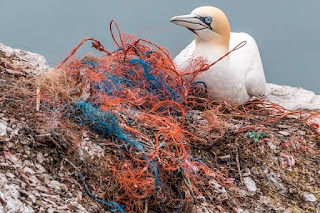The Most Ambitious Project To Rid The World's Ocean Of Plastic--An Update

Photo Courtesy of Pixabay I've talked about The Ocean Cleanup before on this blog. The Ocean Cleanup is the most ambitious project of its kind. The goal is to clean up 50 percent of the Great Pacific Garbage Patch (GPGP), the largest accumulation of ocean plastic in the world. Located between California and Hawaii, it's one of five gyres (circular systems of ocean currents) that accumulate plastic garbage. Once the plastic is retrieved, it's hoped that most of it can be recycled. The GPGP is twice the size of Texas and contains an estimated 1.8 trillion pieces of plastic with a total weight of about 80,000 tons. The Ocean Cleanup technology includes passive floating barriers to concentrate and capture the debris. Natural ocean forces are used to capture the debris. Electronics used for monitoring and controlling the system are all solar powered. The system is modular, allowing improvements to be made based on experience and funding. What's Been Comp



